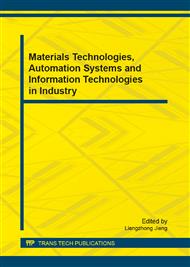p.85
p.91
p.97
p.102
p.108
p.113
p.120
p.126
p.131
Modeling Industrial Cost-Benefit Matrix Allocation of Carbon Emission Reduction
Abstract:
A Cost-Benefit matrix linear programming model is proposed to optimally allocate industrial sectors layout. The integrated matrix of maximized benefit and minimized cost factors, comprising environmental and technological factors of output, carbon emission and context, is associated with fuzzy factor t to form multiple objective functions. Resulting of the illustrative model implies that carbon emissions less than 3% are appeared from base year to neighboring year after applying the C-B model. Significantly, the optimal method can yield benefits, reduce carbon emissions, and systematically arrange industrial distribution for policy-making.
Info:
Periodical:
Pages:
108-112
Citation:
Online since:
August 2013
Authors:
Price:
Сopyright:
© 2013 Trans Tech Publications Ltd. All Rights Reserved
Share:
Citation:


